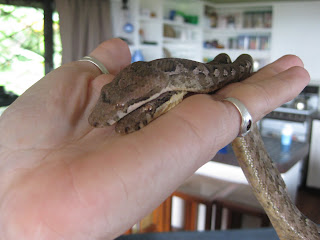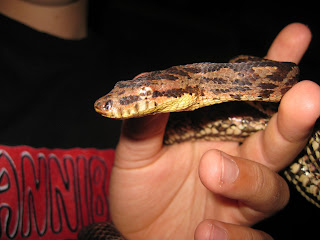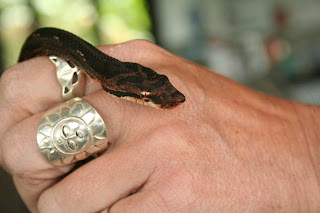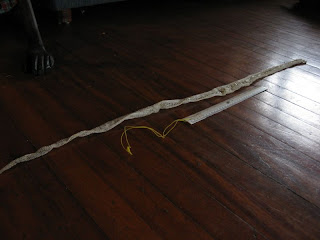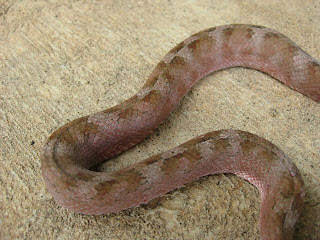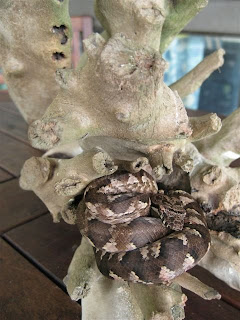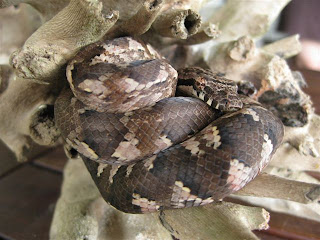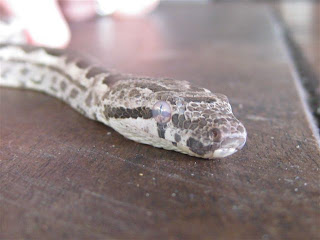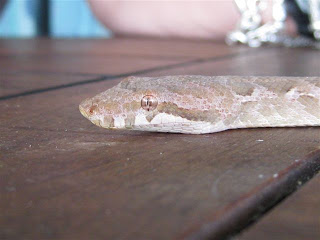A Candoia Christmas!

Santa brought 5 new additions! Our friend Peter had to leave Fiji, and as you cannot export these endemic species, has passed his group along to me. We now have 2 large females (from Kadavu Island), 3 small males (from Viti Levu Island) and our original group of 2 small males and 1 small female (from Taveuni Island). Plus our extended family (with other enthusiasts) has another small male from Viti Levu, and a large female from Taveuni, so we have a pretty interesting group forming. Although this is still a small sample, I am seeing different patterns from the three different islands, and I'm going to start recording and photographing this. For the moment here are a few snaps: Our original males from Taveuni (Zigzag and diamond back patterns and speckled bellies) New males from Viti Levu, the main island of Fiji(Blotchy back patterns and a black belly stripe) New females from Kadavu (Blotchy back patterns and plain or speckled bellies)
